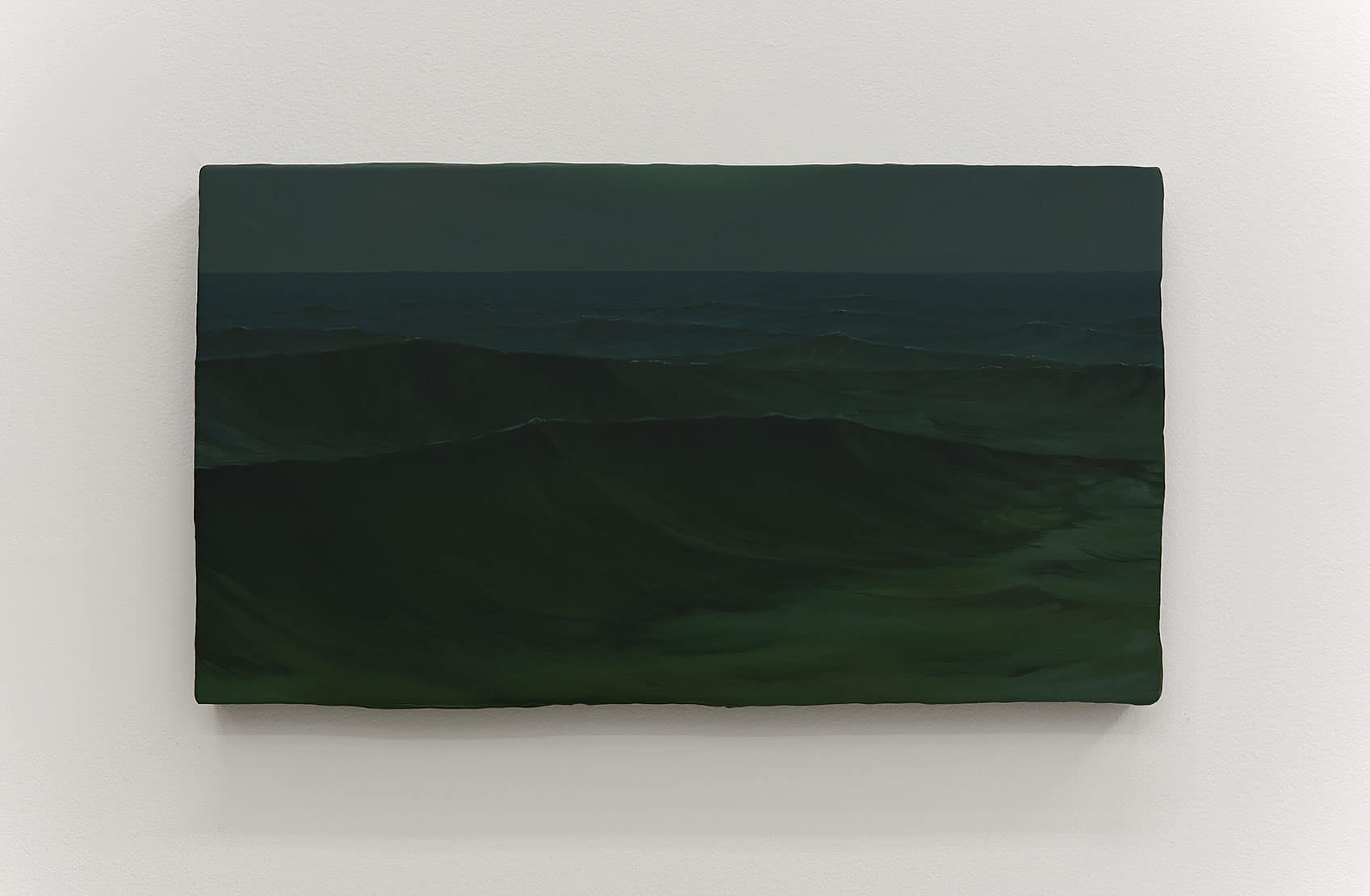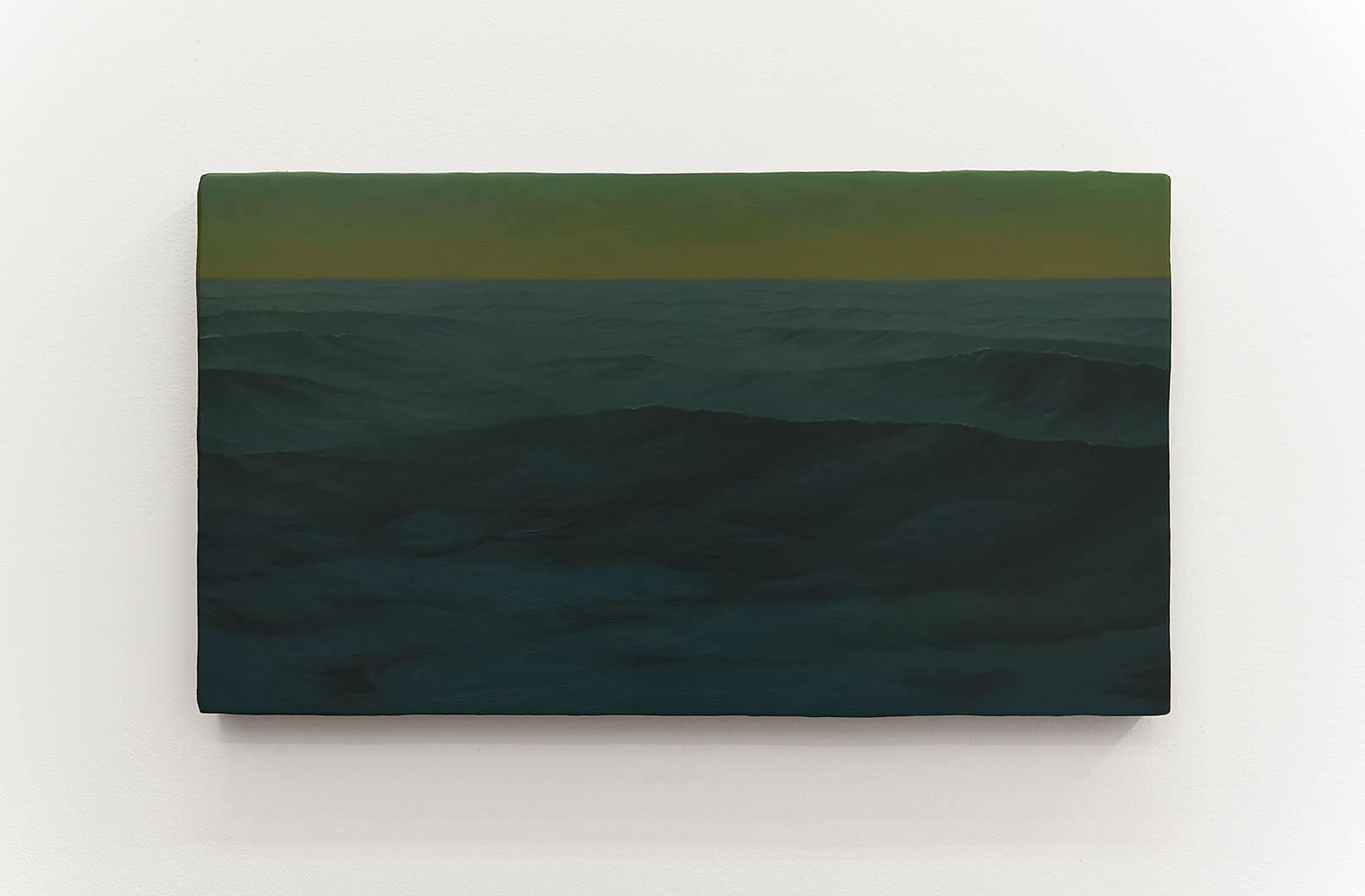
Sarah Schlesinger, View from Land, 2024
Dark, twilight waves move across the twin canvases; the sea’s clear, almost transparent, with the moon’s light catching on the overlapping movements of the water. But can you trust what you see? Do the night waters truly have nothing to hide? Expanding on her past seascapes’ investigation into light and shadow, Sarah Schlesinger’s View from Land and View from Sea toy with the notion of ‘a trick of the light’; using one’s preconceived notions of two dimensionality, point-of-view, and the landscape genre to reconsider what typically remains unseen — just out of sight — through these two paintings.
Taking inspiration for her latest body of work from Gustave Courbet’s The Stone Breakers (1849), Schlesinger not only makes reference to the artist’s favor of a low viewpoint, leaving only a sliver of sky at the top of the painting, but also in the history of The Stone Breakers as an artwork. Initially ill-received by some for its humble subject matter, The Stone Breakers has since become known as a masterpiece of Realism. Though the original painting was destroyed in World War II, it exists in the form of an alternative painting made by Courbet: a mirrored image of the same scene, drawn from an opposing viewpoint. Taking in the themes of renegotiating a historic genre and revealing alternative perspectives, Schlesinger’s View from Land and View from Sea invite viewers to rethink how we, as viewers, approach landscape paintings.
Created with a restrained palette on a small scale, Schlesinger’s paintings don’t pull the viewer in by consuming one’s field of vision — as is common in larger scale works on similar themes like Karen Gunderson’s single-color water paintings, Hiroshi Sugimoto’s minimalist seascape photos, and even Mark Rothko’s expansive colour-field artworks. Instead, the viewer is called to look closer, and is physically drawn in by the discrepancies across the two compact paintings View from Land and View from Sea, initially installed side by side. Rendered in low lighting, the paintings at first glance seem identical, though, much like Courbet’s Stonebreakers, are actually unique works showing opposing viewpoints of waves cresting on the open ocean. This difference, only noticeable through close-looking due to the darker hue of the paints, toys with the idea of what could lie hidden behind the sceneries created by artists that would otherwise go unknown.
This play of contrasting one’s initial understanding with what lies deeper is central to Schlesinger’s practice; her gardenscapes for example employ false symmetry, casted shadows and suggestions of hidden objects in an investigation of what exists just out of view. In these seascapes, by subverting the typical vantage point and conventions of water motifs in landscapes — where waves typically break towards the observer — she re-enfleshes the waves and grants them three-dimensionality through an additional plane. At the same time, Schlesinger also questions the limitations of the viewer’s traditional viewpoint and their comfortability with the traditional imagery of and constraints upon seascapes in landscape painting; encouraging audiences to engage in long-looking, provoking them to catch her plays on light and perspective that would otherwise go unseen
(By Teddy Woods)
